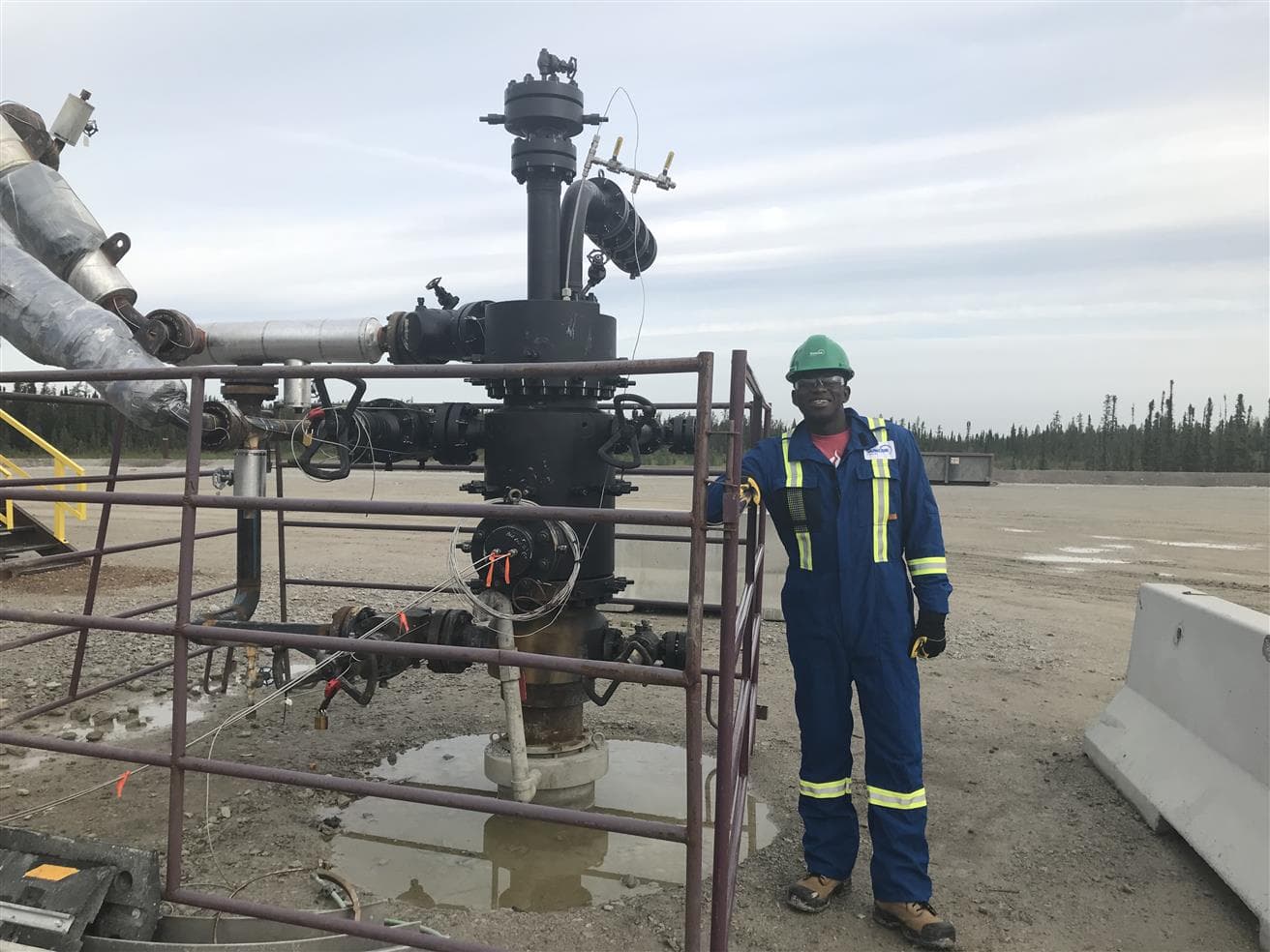Two things are true. Nothing beats a hot lunch on a cold day, and if you’re planning on keeping it hot for any period of time, you’re probably going to have to put it in some sort of vacuum sealed container.
The same idea works in the case of preventing heat loss in steam assisted gravity drainage (SAGD) in situ operations.
Approximately 80 per cent of Canada’s oil sands are too deep to mine using the truck and shovel technique and must be tapped using in situ production. Steam is injected into the ground through an injector well to heat bitumen to make it more fluid (less viscous) and can then be extracted through a producer well. The injected steam loses heat as it travels down the well to the bitumen.
As part of our efforts to improve our operations and reduce our greenhouse emissions, we piloted Vacuum Insulating Tubing (VIT) technology at our Firebag in situ operations.
Like the technology in your favourite insulated thermos, VIT consists of two concentric tubes. The air between the tubes is removed, creating a vacuum layer. Devoid of air, the gap reduces the amount of heat the steam loses as it makes it way down the well to the bitumen. To put it simply: the less air, the less heat loss, the less steam needed.
Steam is a limited resource because we need water and burn gas to produce it, and creating steam produces emissions. By reducing the amount of steam needed to get the same barrel of oil, we can reduce the steam oil ratio (SOR) of our SAGD facilities.
“Improving water systems in SAGD operations is where we can make the most energy efficiency, environmental and cost effectiveness gains. By reducing the amount of steam we need to produce oil from a well, we’re able to solve a big piece of the puzzle,” says Kome Eto, Upstream production engineer.
“The Firebag VIT pilot began in 2019, and almost from day one, we started seeing positive results,” says Kome. “Our data showed that the temperature outside the VIT pipes were much cooler than those that didn’t use the technology. So, with less heat loss, we needed less additional steam - increasing energy efficiency.”
With the success of the pilot, we have the potential to introduce VIT as part of SAGD well designs moving forward. The team has also shared learnings from the pilot with Canada’s Oil Sands Innovation Alliance (COSIA) member companies so other producers may consider applying the technology to their operations.
Approximately 80 per cent of Canada’s oil sands are too deep to mine using the truck and shovel technique and must be tapped using in situ production. Steam is injected into the ground through an injector well to heat bitumen to make it more fluid (less viscous) and can then be extracted through a producer well. The injected steam loses heat as it travels down the well to the bitumen.
As part of our efforts to improve our operations and reduce our greenhouse emissions, we piloted Vacuum Insulating Tubing (VIT) technology at our Firebag in situ operations.
Like the technology in your favourite insulated thermos, VIT consists of two concentric tubes. The air between the tubes is removed, creating a vacuum layer. Devoid of air, the gap reduces the amount of heat the steam loses as it makes it way down the well to the bitumen. To put it simply: the less air, the less heat loss, the less steam needed.
Steam is a limited resource because we need water and burn gas to produce it, and creating steam produces emissions. By reducing the amount of steam needed to get the same barrel of oil, we can reduce the steam oil ratio (SOR) of our SAGD facilities.
“Improving water systems in SAGD operations is where we can make the most energy efficiency, environmental and cost effectiveness gains. By reducing the amount of steam we need to produce oil from a well, we’re able to solve a big piece of the puzzle,” says Kome Eto, Upstream production engineer.
“The Firebag VIT pilot began in 2019, and almost from day one, we started seeing positive results,” says Kome. “Our data showed that the temperature outside the VIT pipes were much cooler than those that didn’t use the technology. So, with less heat loss, we needed less additional steam - increasing energy efficiency.”
Shareable, repeatable, transferable… oh my!
The Firebag VIT team was able to apply the learnings from the pilot on a new well pad experiencing heat loss which sped up the start-up.With the success of the pilot, we have the potential to introduce VIT as part of SAGD well designs moving forward. The team has also shared learnings from the pilot with Canada’s Oil Sands Innovation Alliance (COSIA) member companies so other producers may consider applying the technology to their operations.

.jpg?mw=304&modified=20210929193153&hash=98D59E42D8503D7D75AB7D29EB77A216)
